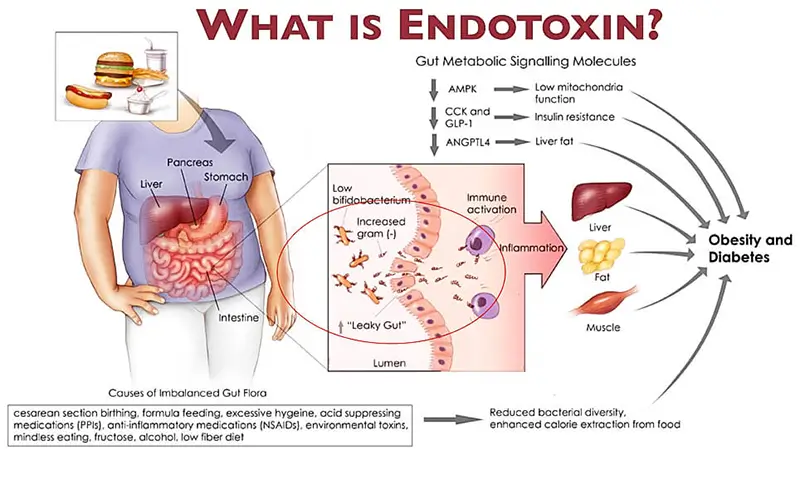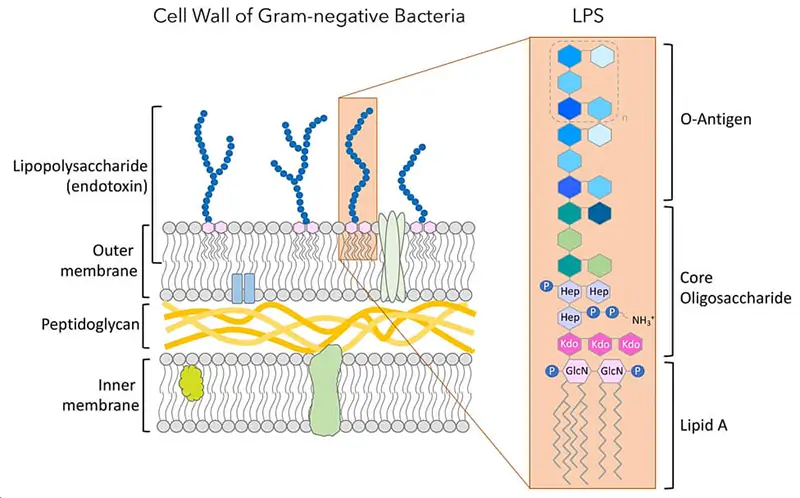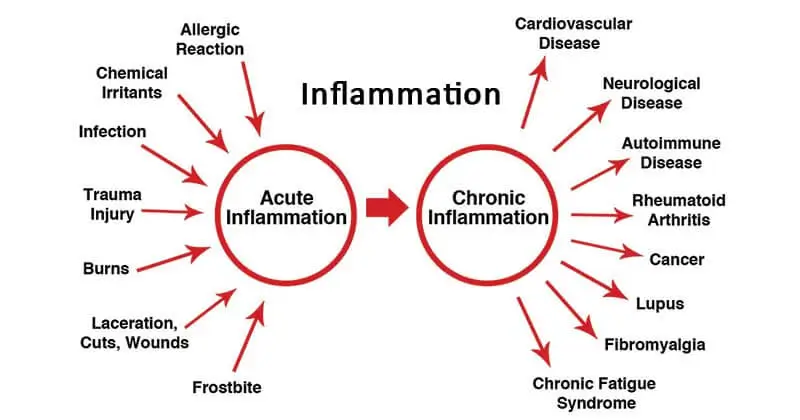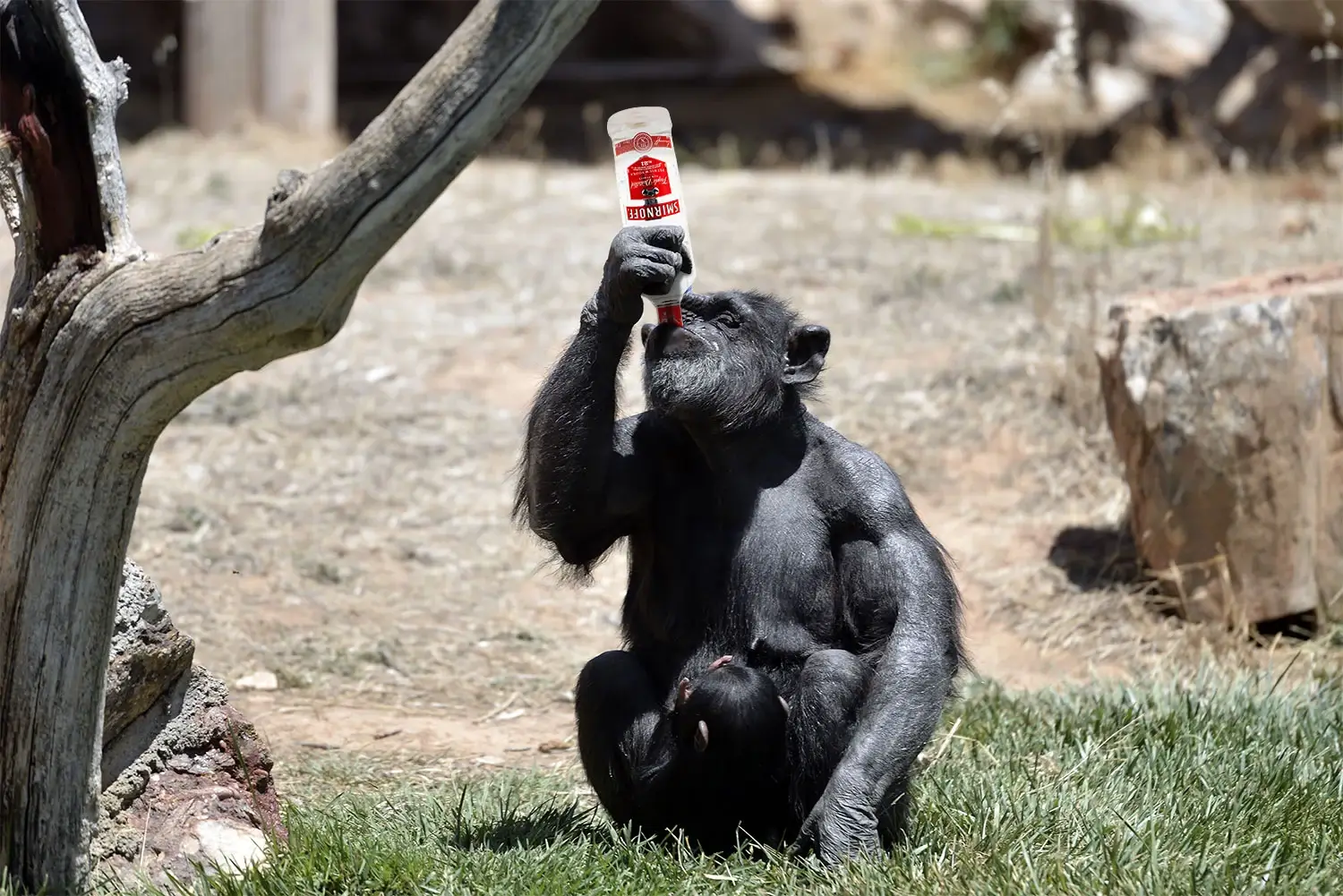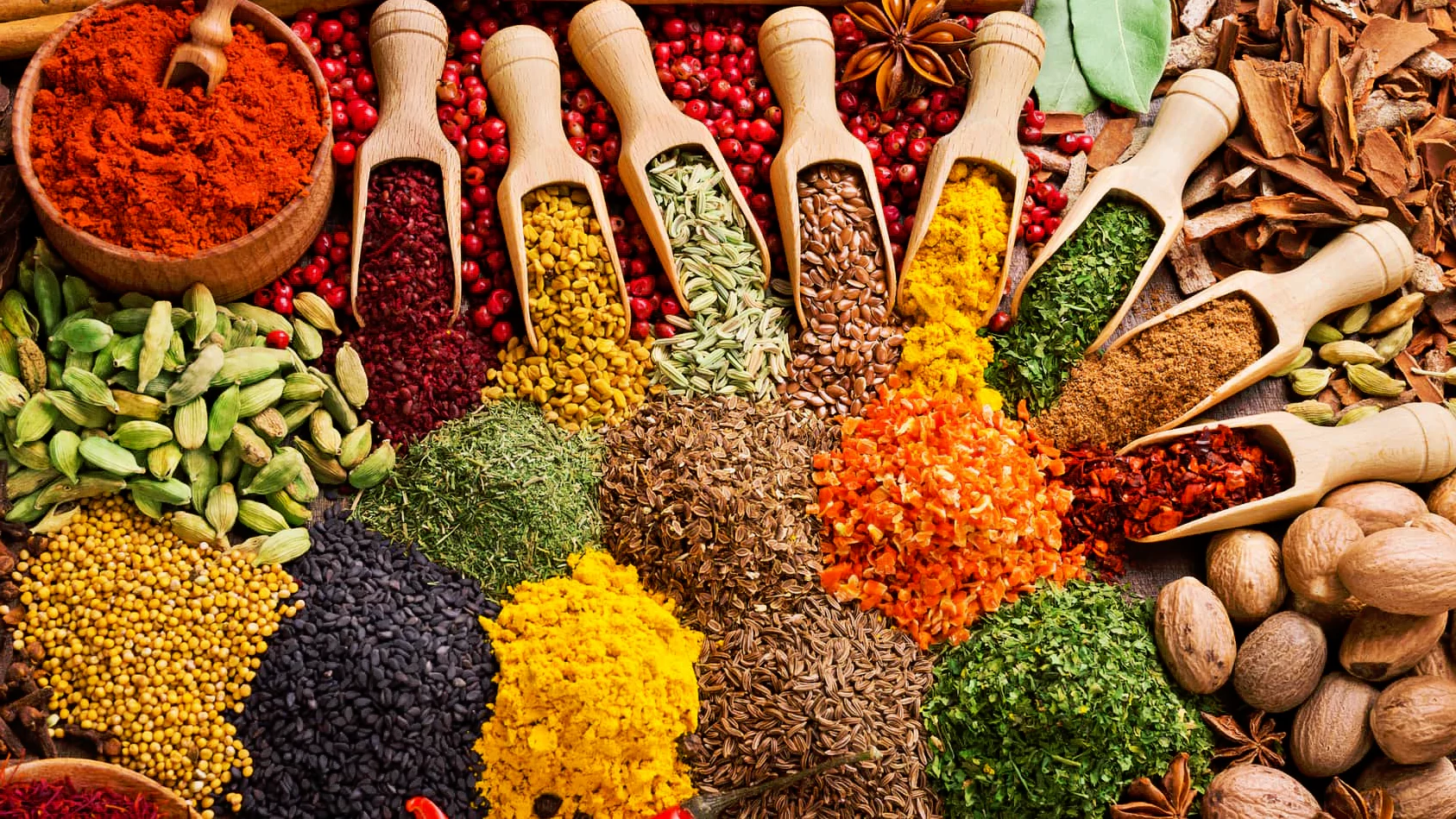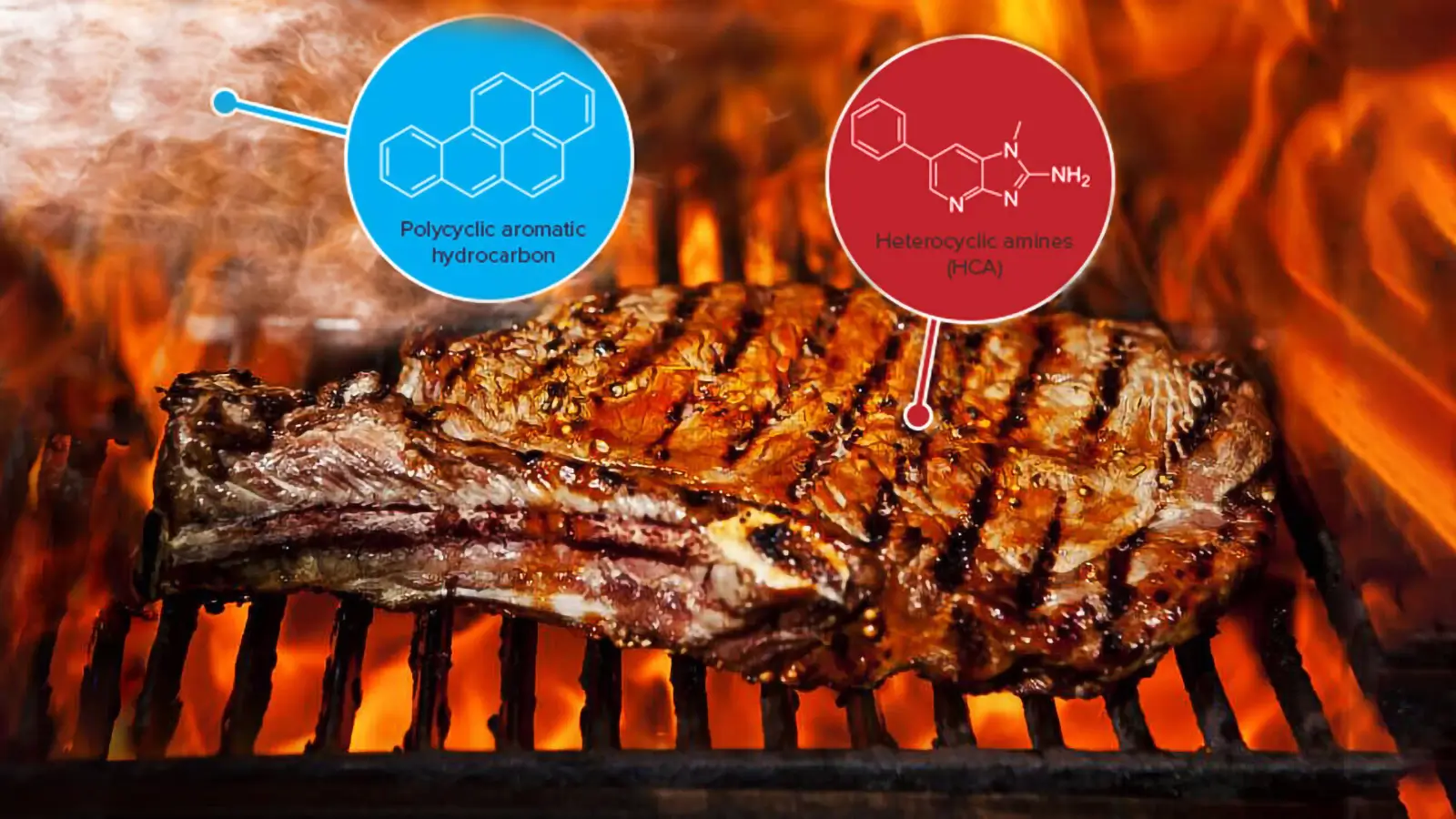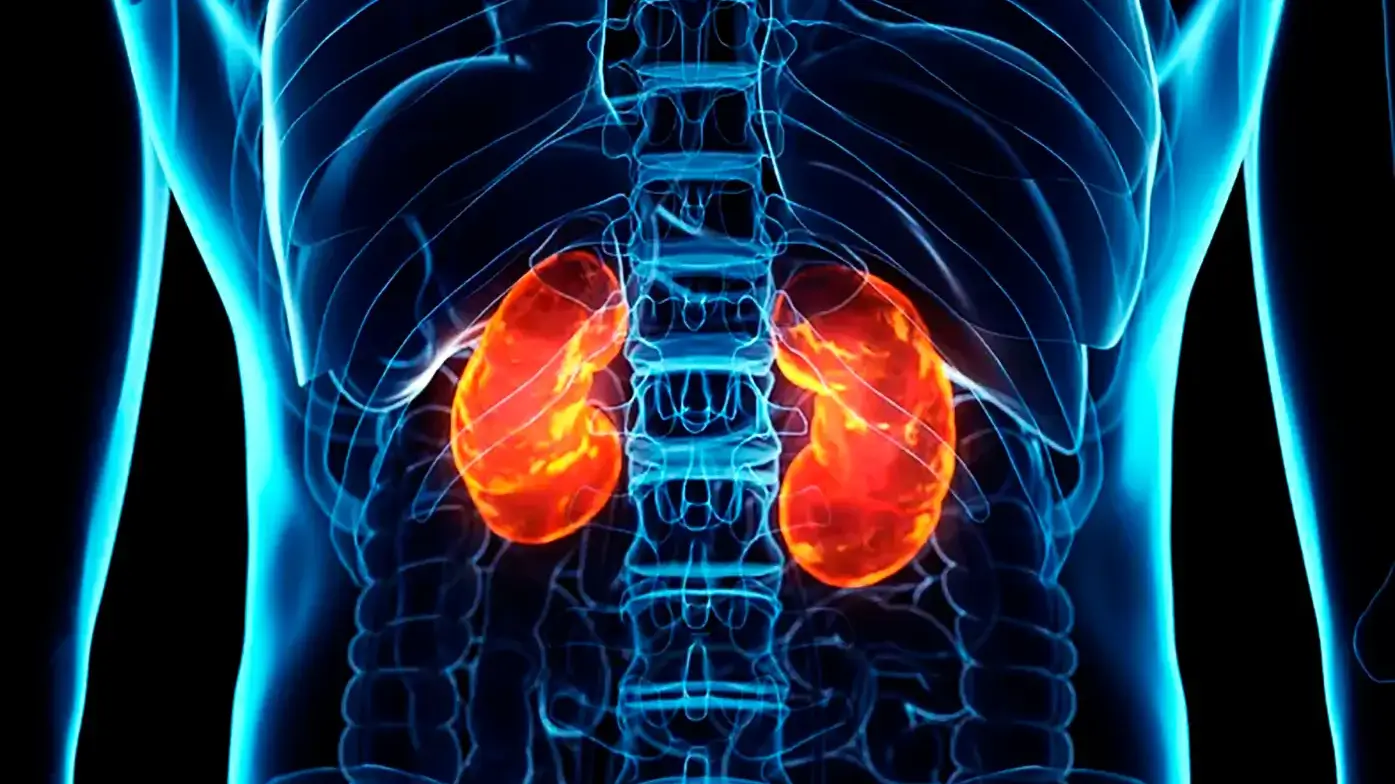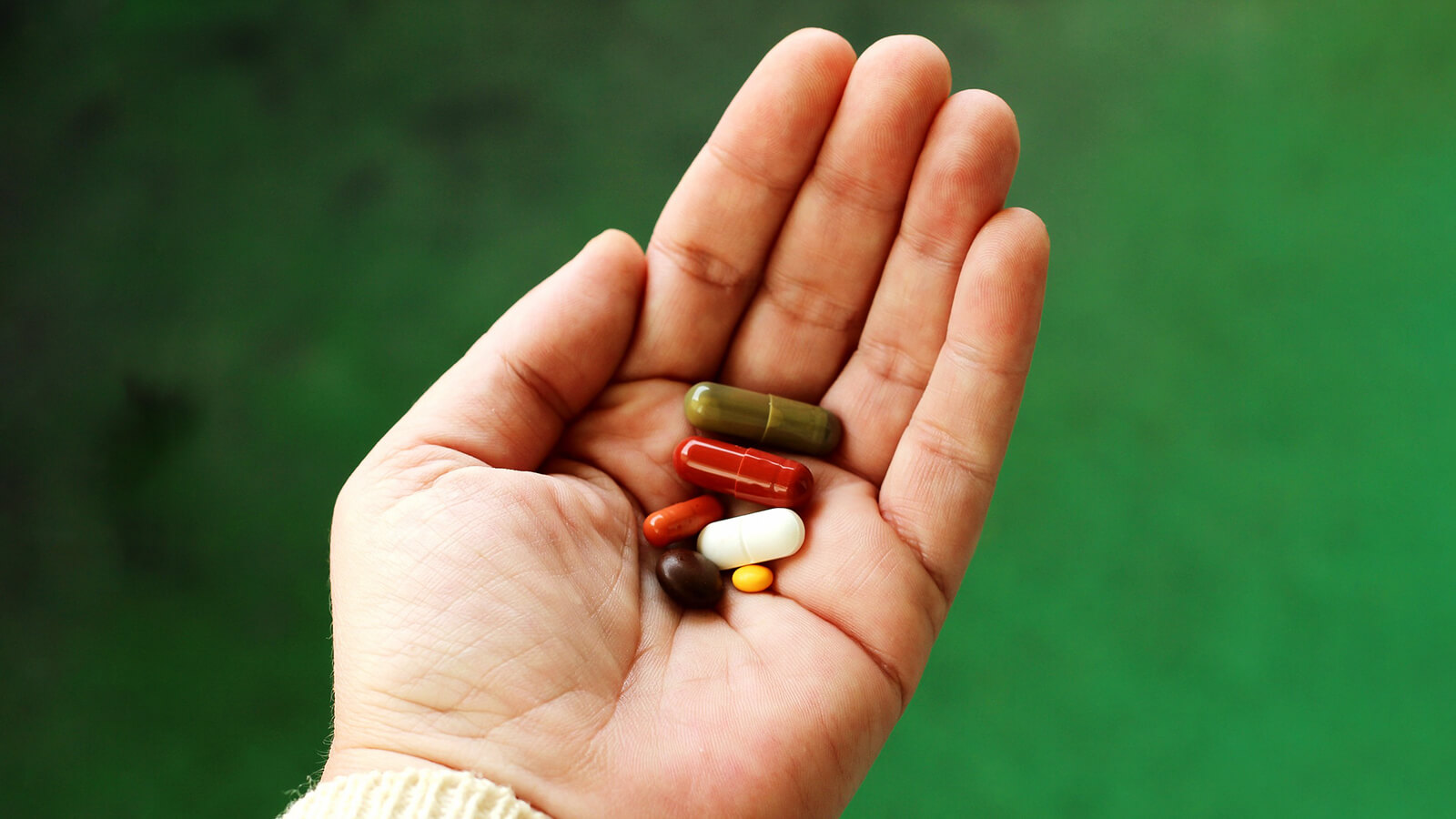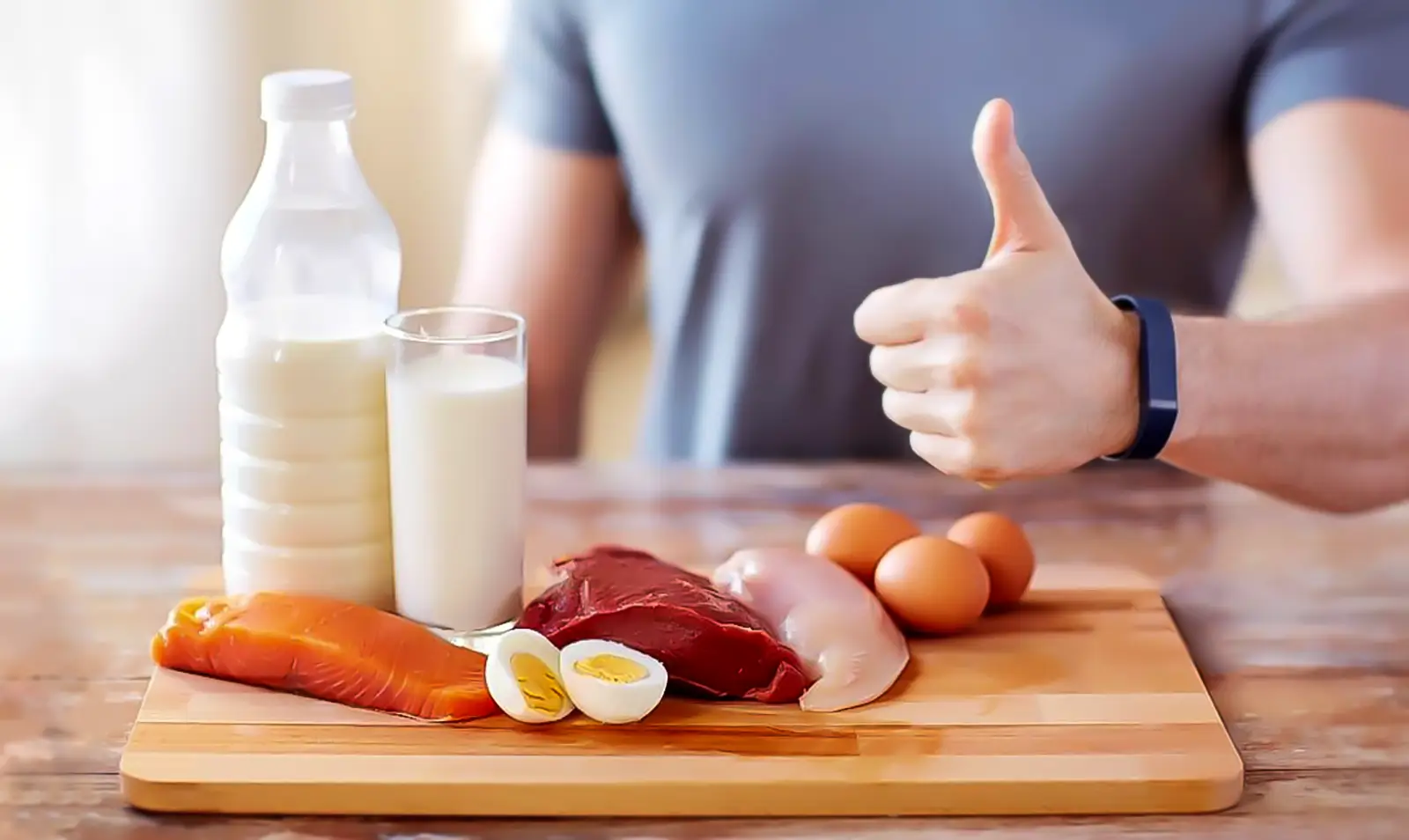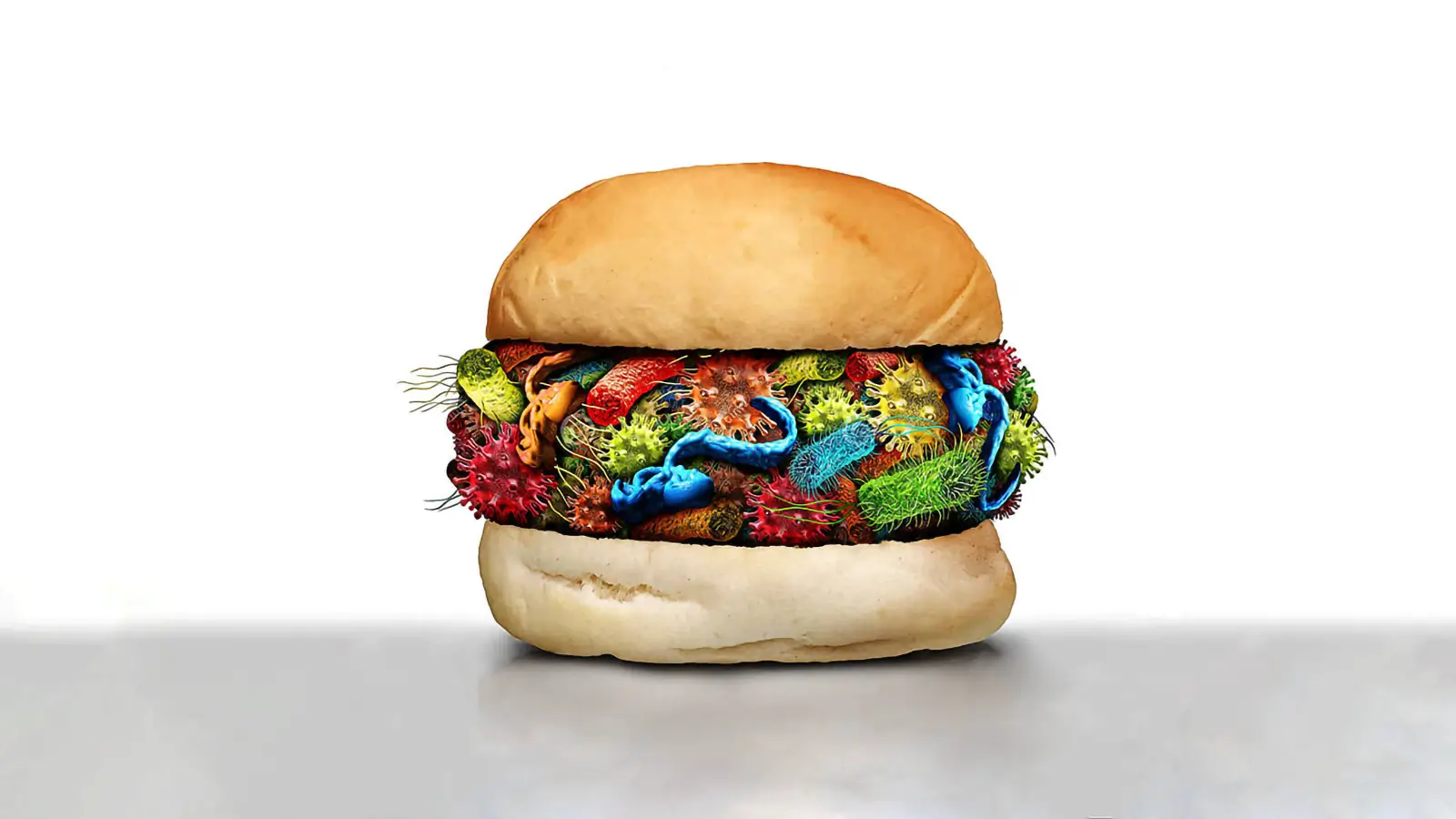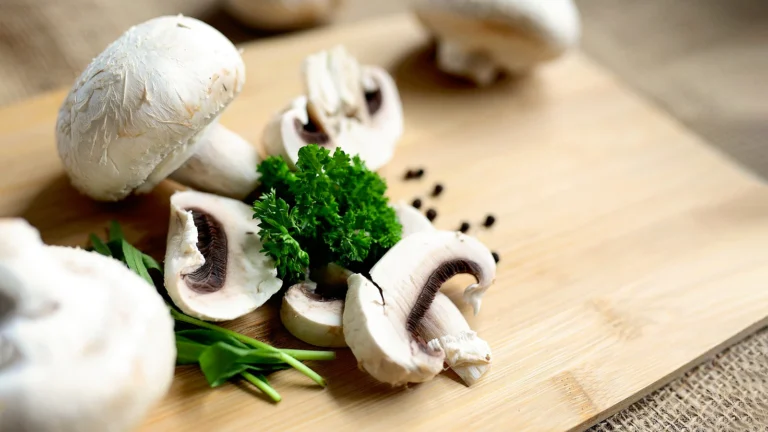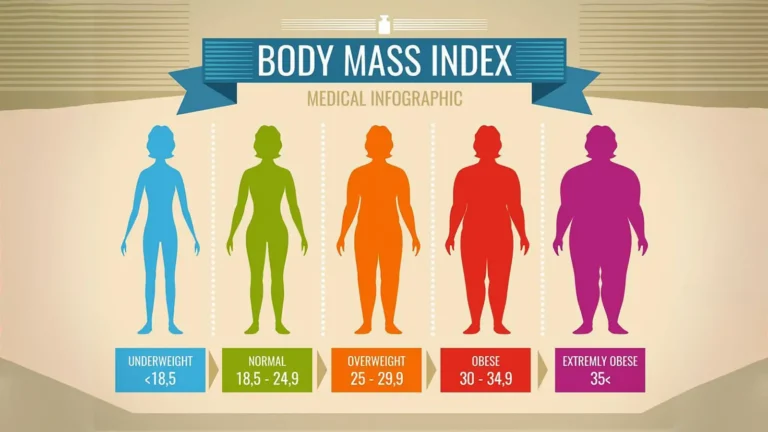Endotoxémie Bactérienne de la Viande Cuite- Inflammation et Alimentation
Les humains sont-ils omnivores au sens propre de l'anatomie ? Il existe une différence fondamentale dans le fonctionnement du tube digestif entre les plantes et les espèces carnivores.
Milos Pokimica
Écrit par : Milos Pokimica
Examiné Médicalement Par : Dr. Xiùying Wáng, M.D.
Mis à jour le 9 juin 2023Le rôle émergent de l'inflammation chronique dans les principales maladies chroniques de la société moderne a suscité des recherches sur l'impact de la nutrition et des habitudes alimentaires sur l'état inflammatoire. La majorité des études humaines ont établi un lien entre l'apport alimentaire et les marqueurs d'inflammation systémique tels que la protéine C-réactive à haute sensibilité (HS-CRP), l'interleukine-6 (IL-6) et le facteur de nécrose tumorale-alpha (TNF-).
Des influences alimentaires significatives ont été établies pour l'indice glycémique (IG) et la charge glycémique (CG), les fibres, la composition en acides gras, le magnésium, les caroténoïdes et les flavonoïdes. Le régime alimentaire à base de plantes entières ou même le modèle alimentaire méditerranéen traditionnel, qui présente généralement un rapport élevé entre les graisses monoinsaturées (AGMI) et les graisses saturées (AGS) et entre les acides gras polyinsaturés (AGPI) ω-3 et ω-6 et qui fournit une abondance de fruits, de légumes, de légumineuses et de céréales, a montré des effets anti-inflammatoires par rapport aux modèles alimentaires nord-américains et nord-européens typiques dans la plupart des études d'observation et d'intervention. Il existe un large éventail de facteurs qui influencent l'inflammation causée par l'alimentation, mais un régime alimentaire complet, riche en antioxydants et en nutriments pourrait devenir le régime de choix pour diminuer l'inflammation chronique dans la pratique clinique.
Une inflammation prolongée de faible intensité est liée à une augmentation du stress oxydatif et à une altération du métabolisme du glucose et des lipides dans les cellules adipeuses, les muscles et le foie. En conséquence, la recherche indique que certains composants alimentaires peuvent influencer ces voies inflammatoires clés.
L'un des facteurs à l'origine des pics d'inflammation après la consommation de produits animaux est un processus connu sous le nom d'endotoxémie. L'endotoxémie métabolique induite par l'alimentation a été proposée comme l'une des principales causes de l'inflammation, et ces voies semblent être préjudiciables à un vieillissement en bonne santé.
En tant qu'êtres humains, contrairement aux espèces carnivores, nous avons des filtres de résistance très faibles, ce qui signifie que toute bactérie vivante que nous mangeons crée une inflammation et que le régime alimentaire peut nous tuer si la bactérie est dangereuse. Nous ne pouvons pas manger de viande non cuite. Les animaux carnivores ont des acides biliaires extrêmement corrosifs capables de tuer tout micro-organisme vivant et leur système digestif est pratiquement stérile. Nous, comme tous les autres mangeurs de plantes, avons des acides biliaires doux et des filtres peu résistants et devons cuire la viande et tout autre aliment susceptible de propager une maladie infectieuse. Par exemple, la pasteurisation est obligatoire.
Ce que les gens ne comprennent pas, c'est que même si nous faisons cuire la viande, nous ne dématérialisons pas magiquement toutes les bactéries qui s'y trouvaient. Nous les tuons seulement par la chaleur, mais elles sont toujours là. Les micro-organismes sont toujours présents dans la viande, mais ils sont morts. Ils ne présentent plus aucun risque d'infection.
Mais cela ne signifie pas qu'ils ne présentent plus de risque.
Même les bactéries non probiotiques mortes comptent comme des toxines.
Certaines des substances les plus toxiques au monde sont des endotoxines de ces bactéries de la viande morte.
Ces substances, connues sous le nom d'endotoxines (grec éndon within ; apparenté au vieil irlandais ind-), sont thermiquement (250°C) et chimiquement stables et extrêmement toxiques. L'endotoxine est un lipopolysaccharide complexe (LPS) présent dans la membrane cellulaire externe des bactéries gram-négatives (E.coli, Salmonella typhi, Shigella).
Les bactéries libèrent des endotoxines en grandes quantités lors de la mort cellulaire, ce qui crée un état d'endotoxémie dans l'organisme. Cela signifie que les bactéries peuvent être mortes ou cuites depuis longtemps, mais que leurs endotoxines sont toujours présentes. Les endotoxines sont chimiquement très stables et peuvent résister aux meilleures tentatives de dégradation acide et enzymatique de notre organisme. L'une des principales causes des centaines d'études qui montrent une inflammation accrue due aux aliments d'origine animale, mais pas à la plupart des aliments d'origine végétale, est peut-être la conséquence d'une charge toxique d'endotoxines de bactéries mortes présentes dans les produits d'origine animale. Ces bactéries sécrètent des endotoxines après leur mort et lorsque nous les mangeons, elles sont absorbées par notre système, ce qui conduit à l'inflammation endotoxémique que l'on observe également après la consommation d'œufs, de viande et de produits laitiers.
Cela causerait des dommages à nos organes internes et à tout le corps et augmenterait les risques de maladies chroniques (Gosh et al., 1993).
Si nous avons déjà une maladie auto-immune telle que l'athérosclérose, par exemple, cela ne fera qu'aggraver encore plus notre système immunitaire et créera encore plus de réponse immunitaire (Stoll et al., 2004).
Voici une étude qui a découvert un lien entre l'exposition aux endotoxines et le diabète de type 2 (Harte et al, 2012).
Un faible niveau d'inflammation endotoxémique chronique provoque des dommages comme toute autre inflammation, mais sur une période prolongée. Cela se traduit par des lésions plus rapides et plus visibles de l'ADN, un taux de mortalité plus élevé dû aux maladies chroniques et une longévité réduite.
En revanche, les aliments d'origine végétale ne présentent pas cette caractéristique et leur consommation est corrélée à la réaction anti-inflammatoire après un repas en raison des antioxydants et autres substances anti-inflammatoires qu'ils contiennent. phytochimiques. Il serait intéressant de voir quel degré d'inflammation la consommation de viande provoque chez les espèces carnivores. Jusqu'à présent, je n'ai pas pu trouver de recherche sur l'exposition à l'endotoxémie due aux bactéries de la viande morte chez les espèces carnivores. Cela pourrait être intéressant, car si la viande ne provoque pas d'inflammation chez les animaux carnivores, nous pourrions chercher un moyen de réduire cette même inflammation dans notre propre corps.
La consommation de viande est donc associée à une augmentation de l'inflammation, même si l'on ne tient pas compte du risque de bactéries infectieuses vivantes. Ce mécanisme est naturel et normal, et toutes les espèces carnivores en sont dotées dans une certaine mesure, mais sont plus aptes à y faire face.
Un hamburger frais contient environ cent millions de bactéries par quart de livre. La consommation de repas riches en endotoxines bactériennes pourrait entraîner des épisodes inflammatoires légers mais systémiques qui prédisposent les sujets au développement de maladies chroniques.
La graisse animale contenue dans le même emballage peut jouer un rôle dans la pathogenèse de cette inflammation après les repas. Les endotoxines exercent une puissante attraction sur les graisses saturées, de sorte qu'elles s'y collent et sont ensuite absorbées à travers la paroi intestinale et dans la circulation sanguine (Erridge, 2011).
Cela arriverait-il si nous consommons des aliments riches en graisses saturées d'origine végétale ? Ce serait le cas, mais la différence est qu'il n'y a pas de niveaux élevés de ces toxines dans les aliments à base de plantes. Par exemple, le cacao a une teneur élevée en matières grasses. C'est l'une des plantes qui a de l'énergie stockée sous forme de graisse saturée, la même graisse que l'on trouve dans le règne animal. Mais le cacao a aussi un grand nombre d'antioxydants et dans les études diminue toujours le niveau de protéine C-réactive chez les sujets (un marqueur de l'inflammation) (Erridge et al., 2007), (Herieka et al., 2014).
Le haut teneur en antioxydants du cacao prédomine et est capable de neutraliser les effets pro-inflammatoires des endotoxines qui ne sont pas présentes en grand nombre dans les plantes, pour commencer (Gu et al., 2014).
Le problème de la viande est sa forte concentration en bactéries. Cela signifie qu'un régime alimentaire occidental standard, riche en protéines animales et en bactéries, peut avoir des effets néfastes sur la santé. sucre rafiné et la graisse nécessitera un niveau beaucoup plus élevé d'antioxydants pour annuler les mauvais effets pro-inflammatoires.
La question sera de savoir où pouvons-nous utiliser ces résultats et pouvons-nous diminuer les effets pro-inflammatoires au lit des repas riches en protéines animales avec des aliments riches en antioxydants. En d'autres termes, peut-on encore manger de la viande mais aussi ajouter quelques légumes ou fruits riches en antioxydants au même repas pour éviter le risque (Burton Freeman, 2010).
Un grand nombre d'études ont été réalisées sur un sujet et la conclusion est que oui, nous pouvons le faire, mais seulement dans une certaine mesure. Notre objectif premier est d'éviter l'exposition aux toxines. Si vous devez absolument manger des produits animaux, incorporez au moins une quantité suffisante de sources alimentaires anti-inflammatoires et calculez votre apport optimal en ORAC (capacité d'absorption des radicaux libres). Vous pouvez trouver les valeurs ORAC ici (Valeurs ORAC). Cela n'annulerait pas complètement la toxicité de l'exposition à l'endotoxémie due aux bactéries de la viande morte. Ces toxines sont très puissantes et difficiles à désintoxiquer. Il existe des individus génétiquement sensibles qui ont plus de mal à détoxifier ces composés. Les aliments riches en antioxydants réduisent le risque dans une certaine mesure et je conseille d'optimiser l'apport en antioxydants.
La meilleure chose à faire est d'adopter un régime alimentaire à base d'aliments entiers d'origine végétale qui a un niveau optimal d'unités ORAC et un large éventail de sources alimentaires pro-inflammatoires avec un niveau adéquat de tous les micronutriments essentiels.
C'est ce qu'en dit le British Journal of Nutrition.
"L'état postprandial (alimentation) est un état pro-oxydant. La période postprandiale est une période de métabolisme oxydatif actif et de formation de ROS (radicaux libres). Il est de plus en plus évident que l'état postprandial est un facteur important qui contribue aux maladies chroniques. Deux questions principales sont posées : premièrement, quel est le rôle des aliments végétaux, en particulier des fruits riches en composés phénoliques complexes et simples, dans la gestion du métabolisme postprandial ; deuxièmement, les données disponibles montrent-elles que la consommation de ces fruits pendant les repas est une stratégie pratique pour préserver la santé et réduire le risque de maladie ? Les données recueillies suggèrent que la consommation de fruits riches en composés phénoliques augmente la capacité antioxydante du sang et que, lorsqu'ils sont consommés avec des repas riches en graisses et en glucides "pro-oxydants et pro-inflammatoires", ils peuvent contrebalancer leurs effets négatifs. Compte tenu de la teneur et de la disponibilité des graisses et des glucides dans le régime alimentaire occidental, la consommation régulière d'aliments riches en phénols, en particulier en association avec les repas, semble être une stratégie prudente pour maintenir l'équilibre oxydatif et la santé".
Références :
- Ghosh, S., Latimer, RD, Gray, BM, Harwood, RJ et Oduro, A. (1993). Lésion organique induite par l'endotoxine. Médecine de soins intensifs, 21(2 suppl.), S19–S24. https://doi.org/10.1097/00003246-199302001-00005
- Stoll, LL, Denning, GM et Weintraub, NL (2004). Rôle potentiel de l'endotoxine en tant que médiateur pro-inflammatoire de l'athérosclérose. Artériosclérose, thrombose et biologie vasculaire, 24(12), 2227-2236. https://doi.org/10.1161/01.ATV.0000147534.69062.dc
- Harte, A. L., Varma, M. C., Tripathi, G., McGee, K. C., Al-Daghri, N. M., Al-Attas, O. S., Sabico, S., O'Hare, J. P., Ceriello, A., Saravanan, P., Kumar, S. et McTernan, P. G. (2012). High fat intake leads to acute postprandial exposure to circulating endotoxin in type 2 diabetic subjects. Traitements diabétiques, 35(2), 375–382. https://doi.org/10.2337/dc11-1593
- En ligneErridge C. (2011). La capacité des aliments à induire une activation immunitaire innée des monocytes humains in vitro dépend de la teneur en stimulants des récepteurs Toll-like 2 et 4. The British journal of nutrition, 105(1), 15–23. https://doi.org/10.1017/S0007114510003004
- Erridge, C., Attina, T., Spickett, CM et Webb, DJ (2007). Un repas riche en graisses induit une endotoxémie de bas grade : preuve d'un nouveau mécanisme d'inflammation postprandiale. La revue américaine de nutrition clinique, 86(5), 1286-1292. https://doi.org/10.1093/ajcn/86.5.1286
- En ligneHerieka, M., & Erridge, C. (2014). Inflammation postprandiale induite par un repas riche en graisses. Nutrition moléculaire et recherche alimentaire, 58(1), 136–146. https://doi.org/10.1002/mnfr.201300104
- Gu, Y., Yu, S., Park, JY, Harvatine, K. et Lambert, JD (2014). Le cacao alimentaire réduit l'endotoxémie métabolique et l'inflammation du tissu adipeux chez les souris nourries à haute teneur en graisses. Le Journal de la biochimie nutritionnelle, 25(4), 439–445. https://doi.org/10.1016/j.jnutbio.2013.12.004
- En ligneBurton-Freeman B. (2010). Événements métaboliques postprandiaux et composés phénoliques dérivés de fruits : une revue de la science. The British journal of nutrition, 104 Supplément 3, S1–S14. https://doi.org/10.1017/S0007114510003909
Articles Similaires
Vous avez des questions sur la nutrition et la santé ?
J'aimerais avoir de vos nouvelles et y répondre dans mon prochain post. J'apprécie votre contribution et votre opinion et j'ai hâte d'avoir de vos nouvelles bientôt. Je vous invite également à nous suivre sur Facebook, Instagram et Pinterest pour plus de contenu sur l'alimentation, la nutrition et la santé. Vous pouvez y laisser un commentaire et entrer en contact avec d'autres passionnés de santé, partager vos conseils et expériences, et obtenir le soutien et les encouragements de notre équipe et de notre communauté.
J'espère que ce billet a été instructif et agréable pour vous et que vous êtes prêt à mettre en pratique les connaissances que vous avez acquises. Si vous avez trouvé ce billet utile, veuillez le partager à vos amis et à votre famille qui pourraient également en bénéficier. On ne sait jamais qui peut avoir besoin de conseils et de soutien dans son parcours de santé.
– Vous pourriez aussi aimer –

Apprendre la Nutrition
Milos Pokimica est docteur en médecine naturelle, nutritionniste clinique, rédacteur en santé médicale et nutrition et conseiller en sciences nutritionnelles. Auteur de la série de livres Devenir vegetarien ? Examen des sciences, il exploite également le site Web de santé naturelle GoVeganWay.com
Avis de non-responsabilité médicale
GoVeganWay.com vous propose des critiques des dernières recherches liées à la nutrition et à la santé. Les informations fournies représentent l'opinion personnelle de l'auteur et ne sont pas destinées ni implicitement à remplacer un avis médical professionnel, un diagnostic ou un traitement. Les informations fournies sont fournies à titre informatif uniquement et ne sont pas destinées à remplacer la consultation, le diagnostic et/ou le traitement médical d'un médecin ou d'un prestataire de soins de santé qualifié.NE JAMAIS IGNORER LES CONSEILS MÉDICAUX PROFESSIONNELS OU RETARDER LA RECHERCHE DE SOINS MÉDICAUX EN RAISON DE QUELQUE CHOSE QUE VOUS AVEZ LU OU ACCÉDÉ SUR GoVeganWay.com
N'APPLIQUEZ JAMAIS DE CHANGEMENTS AU STYLE DE VIE OU TOUT CHANGEMENT À LA SUITE DE QUELQUE CHOSE QUE VOUS AVEZ LU SUR GoVeganWay.com AVANT DE CONSULTER UN PRATICIEN MÉDICAL AGRÉÉ.
En cas d'urgence médicale, appelez immédiatement un médecin ou le 911. GoVeganWay.com ne recommande ni n'approuve aucun groupe, organisation, test, médecin, produit, procédure, opinion ou autre information spécifique pouvant être mentionné à l'intérieur.
Choix de l'éditeur -
Milos Pokimica est rédacteur spécialisé dans la santé et la nutrition et conseiller en sciences nutritionnelles. Auteur d'une série de livres Devenir vegetarien ? Examen des sciences, il exploite également le site Web de santé naturelle GoVeganWay.com
Derniers articles –
Top Des Nouvelles Sur la Santé - ScienceDaily
- MIT scientists strip cancer of its sugar shieldle décembre 23, 2025
Scientists at MIT and Stanford have unveiled a promising new way to help the immune system recognize and attack cancer cells more effectively. Their strategy targets a hidden “off switch” that tumors use to stay invisible to immune defenses—special sugar molecules on the cancer cell surface that suppress immune activity. Early tests show it can supercharge immune responses and outperform current antibody therapies.
- Scientists find a weak spot in deadly fungus that shut down hospital intensive care unitsle décembre 23, 2025
A deadly hospital fungus that resists nearly every antifungal drug may have an unexpected weakness. Researchers discovered that Candida auris activates specific genes during infection to hunt for nutrients it needs to survive. This insight came from a new living-host model that allowed scientists to watch the fungus in action. The findings could eventually lead to new treatments or allow current drugs to be repurposed.
- This ultra-sensitive imaging system can spot cancer earlierle décembre 23, 2025
A new imaging technology can distinguish cancerous tissue from healthy cells by detecting ultra-weak light signals. It relies on nanoparticles that bind to tumor markers, making cancerous areas easier to identify. The system is far more sensitive than existing tools and could speed up cancer screening. Scientists believe it may help detect tumors earlier and reduce delays in diagnosis.
- Hidden brain maps that make empathy feel physicalle décembre 23, 2025
When we watch someone move, get injured, or express emotion, our brain doesn’t just see it—it partially feels it. Researchers found eight body-like maps in the visual cortex that organize what we see in the same way the brain organizes touch. These maps help us instantly understand actions, emotions, and intentions in others. The discovery sheds light on human empathy and opens doors for new brain-based therapies and AI systems that better understand the body.
- Are they really listening? Watch their blinksle décembre 23, 2025
Your eyes may reveal when your brain is working overtime. Researchers found that people blink less when trying to understand speech in noisy environments, especially during the most important moments. The effect stayed the same in bright or dark rooms, showing it’s driven by mental effort, not light. Blinking, it turns out, is a quiet marker of focused listening.
- This cancer-fighting molecule took 50 years to buildle décembre 22, 2025
MIT scientists have achieved the first-ever lab synthesis of verticillin A, a complex fungal compound discovered in 1970. Its delicate structure stalled chemists for decades, despite differing from related molecules by only two atoms. With the synthesis finally complete, researchers created new variants that showed strong activity against a rare pediatric brain cancer. The breakthrough could unlock an entire class of previously unreachable cancer-fighting molecules.
- A new drug could stop Alzheimer’s before memory loss beginsle décembre 22, 2025
New research suggests Alzheimer’s may start far earlier than previously thought, driven by a hidden toxic protein in the brain. Scientists found that an experimental drug, NU-9, blocks this early damage in mice and reduces inflammation linked to disease progression. The treatment was given before symptoms appeared, targeting the disease at its earliest stage. Researchers say this approach could reshape how Alzheimer’s is prevented and treated.
PubMed, #régime-vegan –
- Comparing diet-related attitudes, perceptions, and behaviors of vegan and omnivorous adults: results from a cross-sectional survey study in Germanyle décembre 22, 2025
CONCLUSION: The findings are consistent with and build on existing research on cognitive and behavioral patterns related to a vegan diet, while at the same time yielding some additional insights. In particular, the results on significant differences in the risk-benefit perception of a vegan diet, as well as on motivations and influences regarding the decision to follow a vegan diet provide an important basis for the development of public health interventions and a foundation for further […]
- Assessment of vitamin A, vitamin B2, vitamin B12, vitamin K, folate, and choline status following 4 months of multinutrient supplementation in healthy vegans: a randomised,…le décembre 19, 2025
CONCLUSION: A multinutrient supplement containing 82 µg of vitamin B(12) per day significantly positively affected vitamin B(12) blood biomarkers in healthy vegans.
- Exploring the synergistic potential of pH and ultrasonication on the functional properties of pea and lentil protein isolates and its formulation in food productle décembre 15, 2025
The substitution of meat proteins with plant-based proteins from various sources is often motivated by nutritional considerations. However, the inherent limited solubility of plant proteins, which results in suboptimal techno-functional properties, remains a persistent challenge in food formulation. The purpose of this study was to utilize unique properties of pea (Pisum sativum L.) and lentil (Lens culinaris) through ultrasonication and pH variation in order to develop a stable and […]
- Healthful and Unhealthful Plant-Based Diets and Their Association with Cardiometabolic Targets in Women Diagnosed with Breast Cancer: A Cross-Sectional Analysis of a Lifestyle Trialle décembre 11, 2025
CONCLUSIONS: Maintaining cardiometabolic risk factors within normal ranges is clinically relevant in BCS, and this may be more likely when a plant-based diet is consumed, especially if low in unhealthy plant foods.
- Functional and Nutritional Properties of Lion’s Mane Mushrooms in Oat-Based Desserts for Dysphagia and Healthy Ageingle décembre 11, 2025
Hericium erinaceus (Lion’s Mane mushroom) is a medicinal species recognised for its neuroprotective and antioxidant properties. This study investigated its potential as a functional ingredient in oat milk-based desserts formulated for individuals with dysphagia. Freeze-dried Lion’s Mane powder (LMP), containing high-quality protein (~16%, amino acid score 88%), dietary fibre (~31%), and phenolic compounds (72.15 mg GAE/g), was incorporated at varying levels using gelatin or iota-carrageenan […]
Messages aléatoires –
Postes en vedette -
Dernières Nouvelles de PubMed, #alimentation végétale –
- Associations Between Healthy and Plant-Based Dietary Patterns and Cognitive Reserve: A Cross-Sectional Analysis of the 1946 British Birth Cohortpar Kelly C Cara le décembre 23, 2025
CONCLUSIONS: CR was positively associated with healthy dietary patterns and inversely associated with unhealthful plant-based dietary patterns. Diet uniquely explained variations in CR and should be considered among influential lifestyle factors in future research. Longitudinal analyses are needed to confirm these findings.
- Patient-Reported Observance of a Mediterranean Diet and Physical Activity in Patients Living with Breast Cancer: Implications for Primary Care Providerspar Lydia Hesseltine le décembre 23, 2025
CONCLUSION: The majority of patients living with breast cancer did not meet the minimal national recommendations. These findings underscore the need for further research to develop strategies to optimize nutrition and physical activity within oncology and primary care settings.
- Dietary Hydrilla verticillata extract enhances growth and immune defense against Aeromonas hydrophila in Labeo rohitapar Faiza Khanam le décembre 23, 2025
This study investigated the effects of dietary Hydrilla verticillata extract (HVE) on growth performance, physiological responses, and disease resistance in Labeo rohita fingerlings subjected to Aeromonas hydrophila challenge. Following acclimatization, the fish were divided into 15 tanks at random (30 fish per tank) and given five different diets that contained 0, 75, 150, 300, or 600 mg/kg HVE for 60 days. Growth was significantly (P
- Dietary quercetagetin attenuates H2O2-induced oxidative damage and preserves meat quality in broilers by modulating redox status and Nrf2/ferroptosis signaling pathwaypar Wenyue Hu le décembre 22, 2025
In modern poultry production, oxidative stress has emerged as a pivotal factor compromising the health status and overall performance of broiler. The aim of this study was to investigate the effects of dietary quercetagetin (QG) supplementation on hydrogen peroxide (H(2)O(2))-induced oxidative damage in breast muscle of broilers, focusing on growth performance, meat quality, and antioxidant function, and elucidating the underlying mechanisms. Two hundred and forty one-day-old Cobb broilers […]
- Effects of dietary selenium supplementation on physiological parameters, tissue fatty acid composition, and fatty acid-metabolism relative gene expression of grouper (Epinephelus coioides) fed high…par Yen-Chun Lee le décembre 22, 2025
The present study evaluated the effects of dietary selenium (Se) supplementation on growth performance, physiological responses, tissue fatty acid profiles, and the expression of genes related to fatty acid metabolism in juvenile grouper (Epinephelus coioides). A control diet based on soy protein concentrate, replacing 40% of the fish meal protein, was supplemented with graded levels of Se at 0, 0.3, 0.6, and 1.0 mg Se kg^(-1). A fish meal-based reference diet was also included for […]
- Unravelling the interaction between feeding regimens and milking time in Parmigiano Reggiano PDO milk: an integrated metabolomics and ion mobility lipidomics approachpar Pier Paolo Becchi le décembre 22, 2025
In this study, an integrated approach based on UHPLC-HRMS metabolomics and IM-HRMS lipidomics has been carried out to unravel the interaction between feeding and milking time in the overall chemical profile of Parmigiano Reggiano (PR) milk. Specifically, ANOVA multiblock OPLS (AMOPLS) modelling revealed the complementarity of the assays in combining the effect of these two critical parameters. In particular, metabolomics highlighted the presence of plant-derived compounds (mainly terpenoids […]
